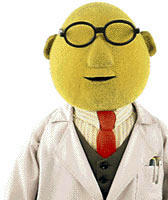
http://en.wikipedia.org/wiki/Thiazyl
This stuff was a hoot. The synthesis was something out of alchemy and gave a wicked smelling residue from the filtered reaction mixture that had at least four different crystalline compounds in it. Pasteur separation of the products and repeated recrystallisation gave a binary mixture of sulphur and S4N4. This is where it becomes interesting. S4N4 is a contact explosive and the sulphur moderates the explosiveness (remove the sulphur and it becomes treacherously unstable). My first research job as an undergraduate was to recrystallize S4N4 until "it crackles when you grind it" (that was what I was told). Not a lie. The crackling was the result of tiny explosions between the mortar and the pestle and indicated that the S4N4 was pure enough to use. Later I would go to work at a lab in Durham England where an amazing chemist from Czechoslovakia prepared very pure S4N4 and purified it further by sublimation. One night a small beaker of the stuff just spontaneously exploded and destroyed a lab bench (one end was wrecked and the bench was split its entire length. What was ominous was that the explosion occurred without any initiation. That was new and we all started to find ways to do our chemistry without S4N4. When I taught this section in my inorganic chemistry courses I would bring in some S4N4 crystals and grind them before the students and then tap the powder and get a small bang like a gunpowder cap. Then the students could smell the sulphur containing decomposition products in the air above the mortar. That was until I had a larger class and used more crystals than usual. I was using my large, very expensive agate mortar and pestle and the explosion was a bit more exciting than usual. The explosion jumped the pestle out of my hand and it shot across the classroom leaving my hand numb and the mortar itself was split in two. Best ... classroom .... demo ... ever.






